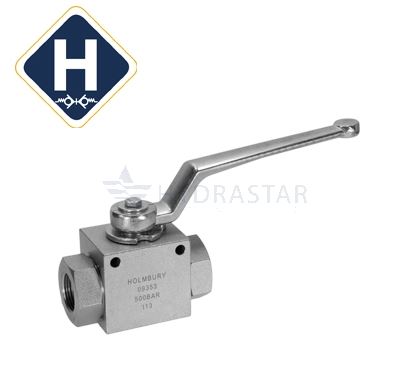A ball valve is a simple, two-part, chambered control valve commonly used in hydraulic, pneumatic, and liquid plumbing systems. Ball valves are used to shut off the flow of liquid or gas, adjust it to a limited level, or redirect flow on a two-forked connector (when used in conjunction with another ball valve). A ball valve is omnidirectional (and can be used as such) but is usually used to control a one-way liquid or gas flow.
Three-way ‘splitter’ ball valves that allow L-directional flow to three different outputs also exist. However, these three-hole valves cannot be used as direct flow level control valves.
How Does A Ball Valve Work?
The mechanism that allows the ball valve to work is straightforward. A metallic, solid ball is installed inside a sealed, airtight cylinder attached to a top-mounted hinge. The ball has two sides removed and a hollow tunnel in the middle, through which liquid or gas can flow. In the ‘open’ position, a ball valve allows the system to work as usual.
When the operator wishes to stop the flow, the ball valve’s external control lever is rotated by 90 degrees. The ball switches sides, blocking the movement of fluid into the next chamber. Some ball valves offer a variable flow capacity. By rotating the control lever to different angles (marked by a gauge), the system can be slowed down or sped up.
Due to their flexibility, ball valves can be used as emergency stop mechanisms, control mechanisms, and runoff devices. They can be set to ‘open’ or ‘closed’ by default, depending on their role in the pipeline.
Why Are Ball Valves Useful For Hydraulics?
Hydraulic ball valves are useful to hydraulic designers because their simple yet effective enclosed design offers resistance to intense heat and pressure. The metal or polyvinyl carbonate (PVC) casing provides effective containment and fluid insulation. The O-ring around the lever also provides an easy way for operators to maintain control over hydraulic pressurization, without having to compromise the system’s physical integrity or risk micro leaks from poorly sealed cracks and faults.
Ball Valves From Hydrastar
If you’re looking to add or replace a ball valve used in your hydraulic system, talk to Hydrastar today. We stock every hydraulic component you could ever need. Call or email us today for a custom quote.



